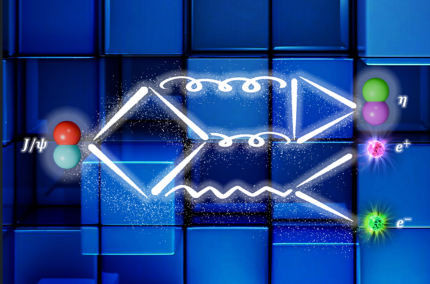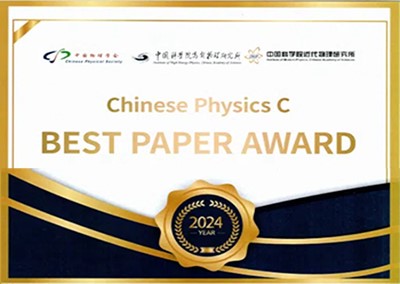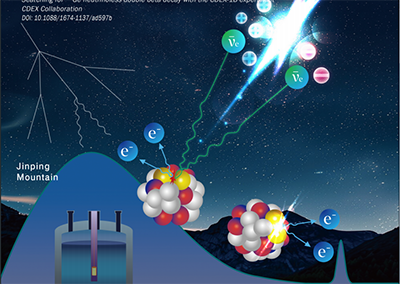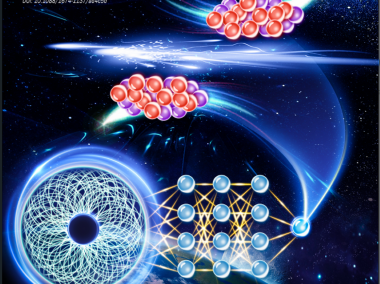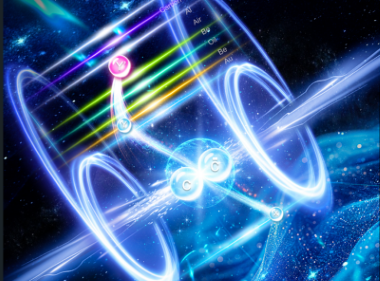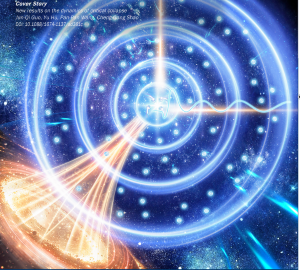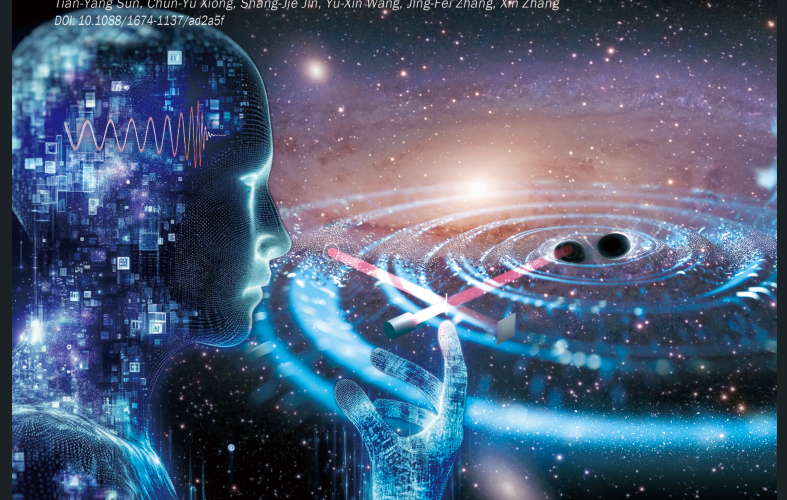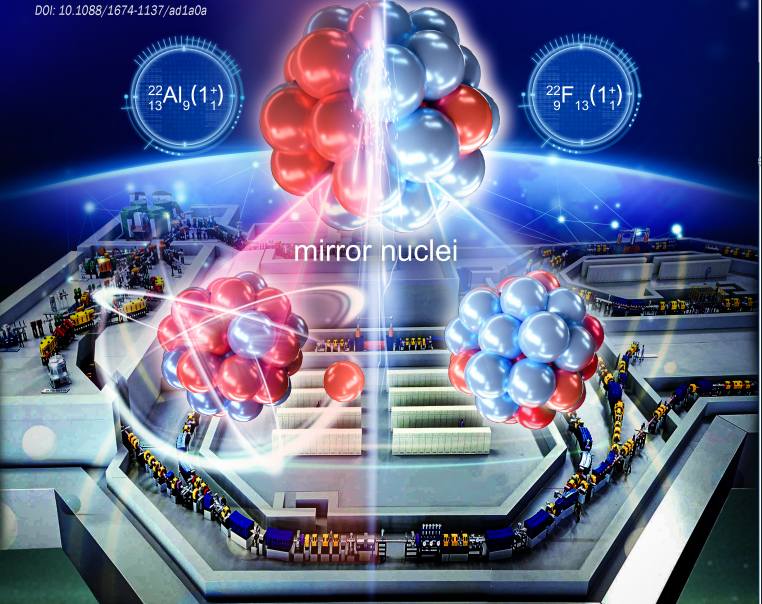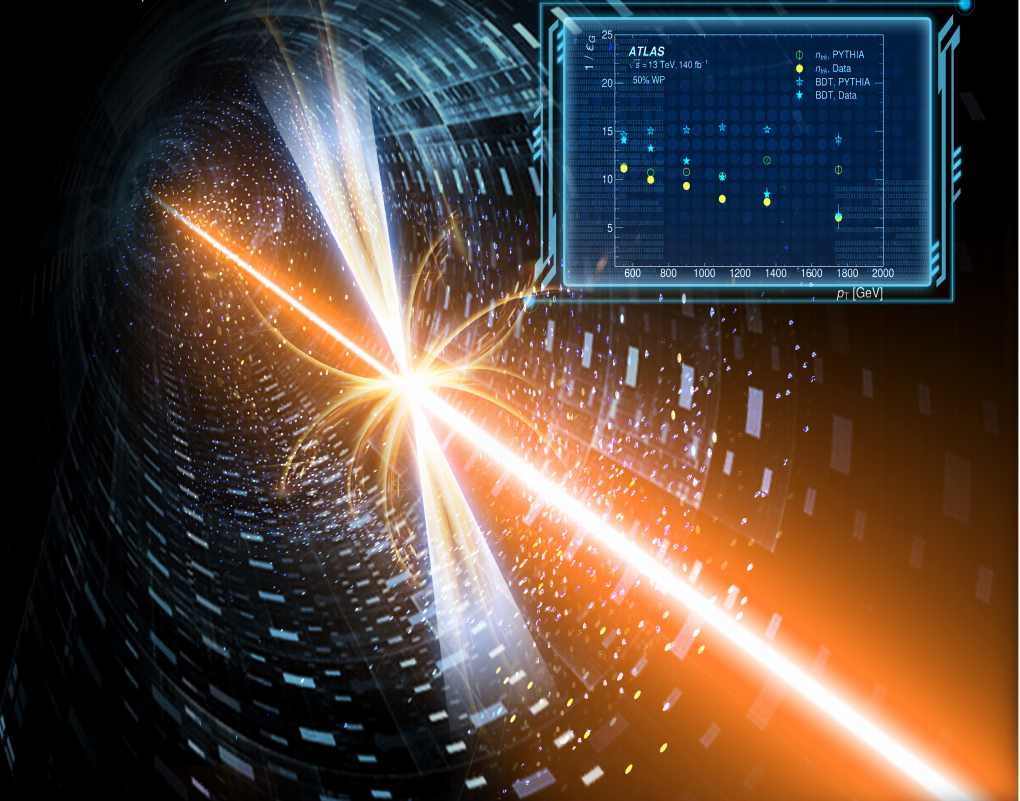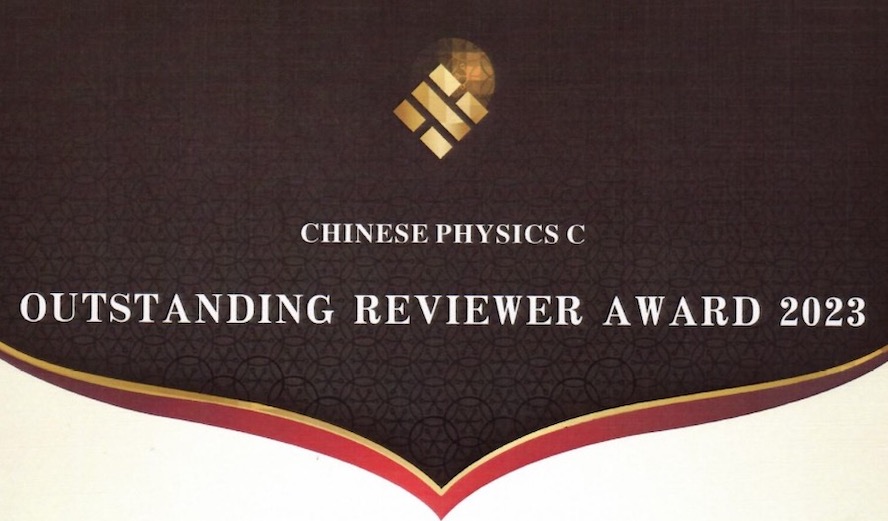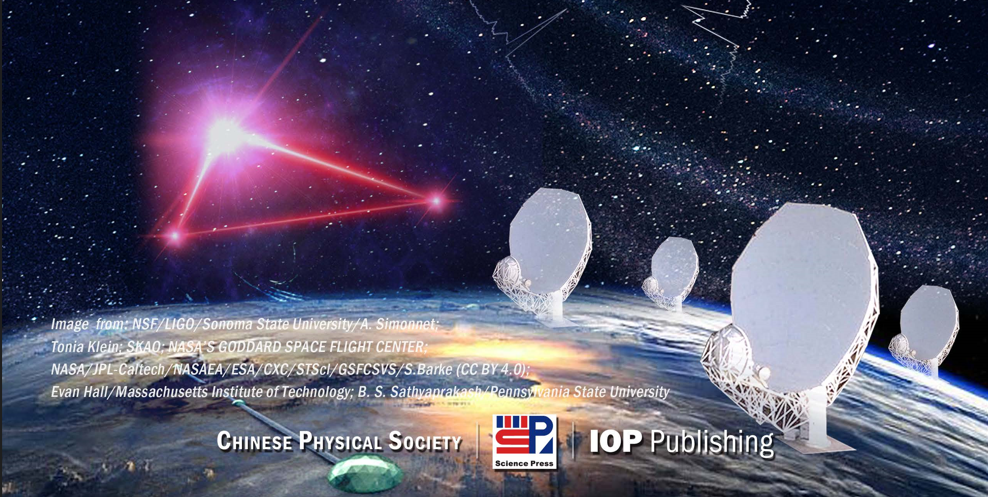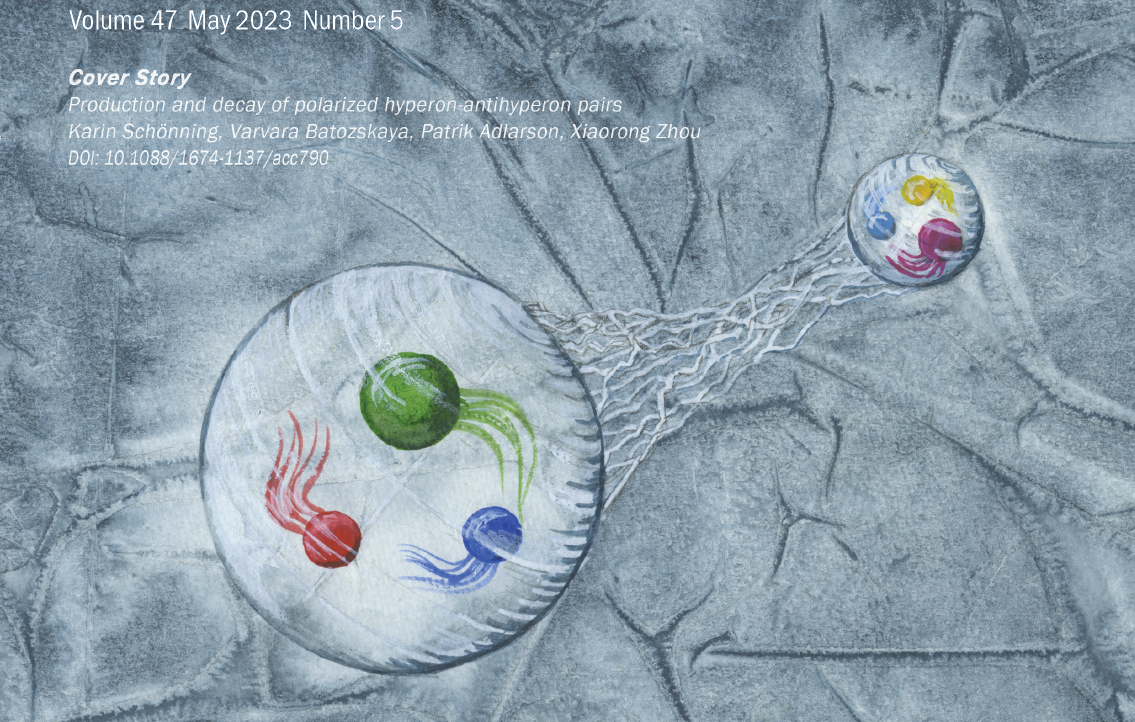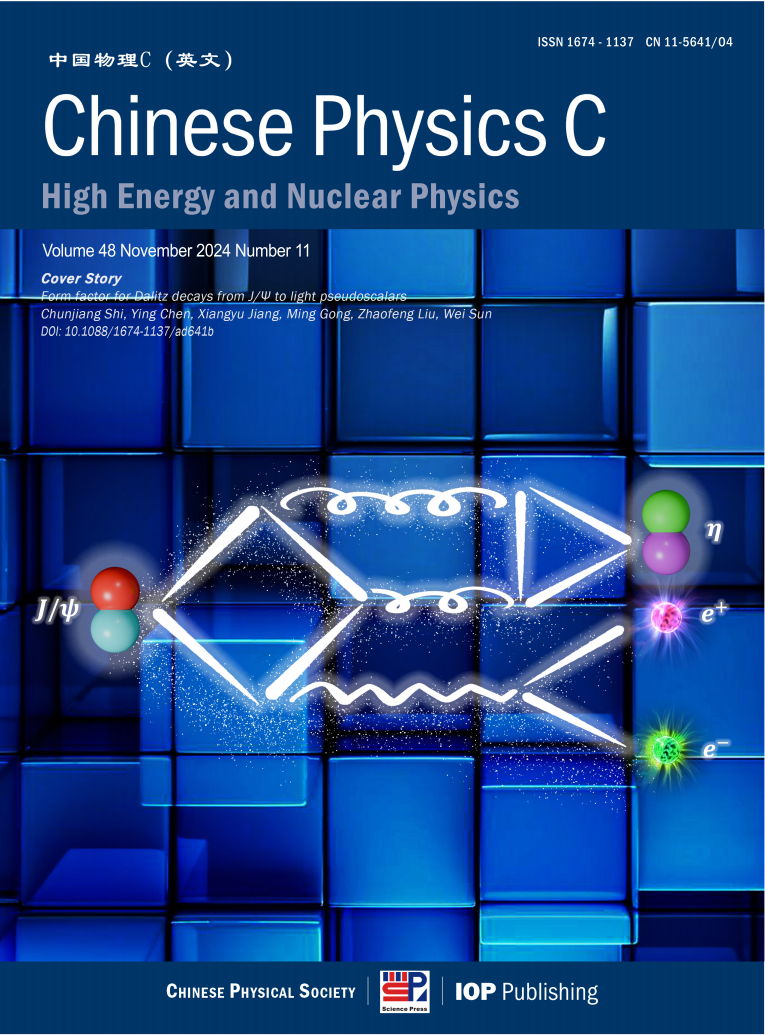Highlights
-
Holographic timelike entanglement entropy from Rindler method
2024, 48(11): 115113. doi: 10.1088/1674-1137/ad57a8
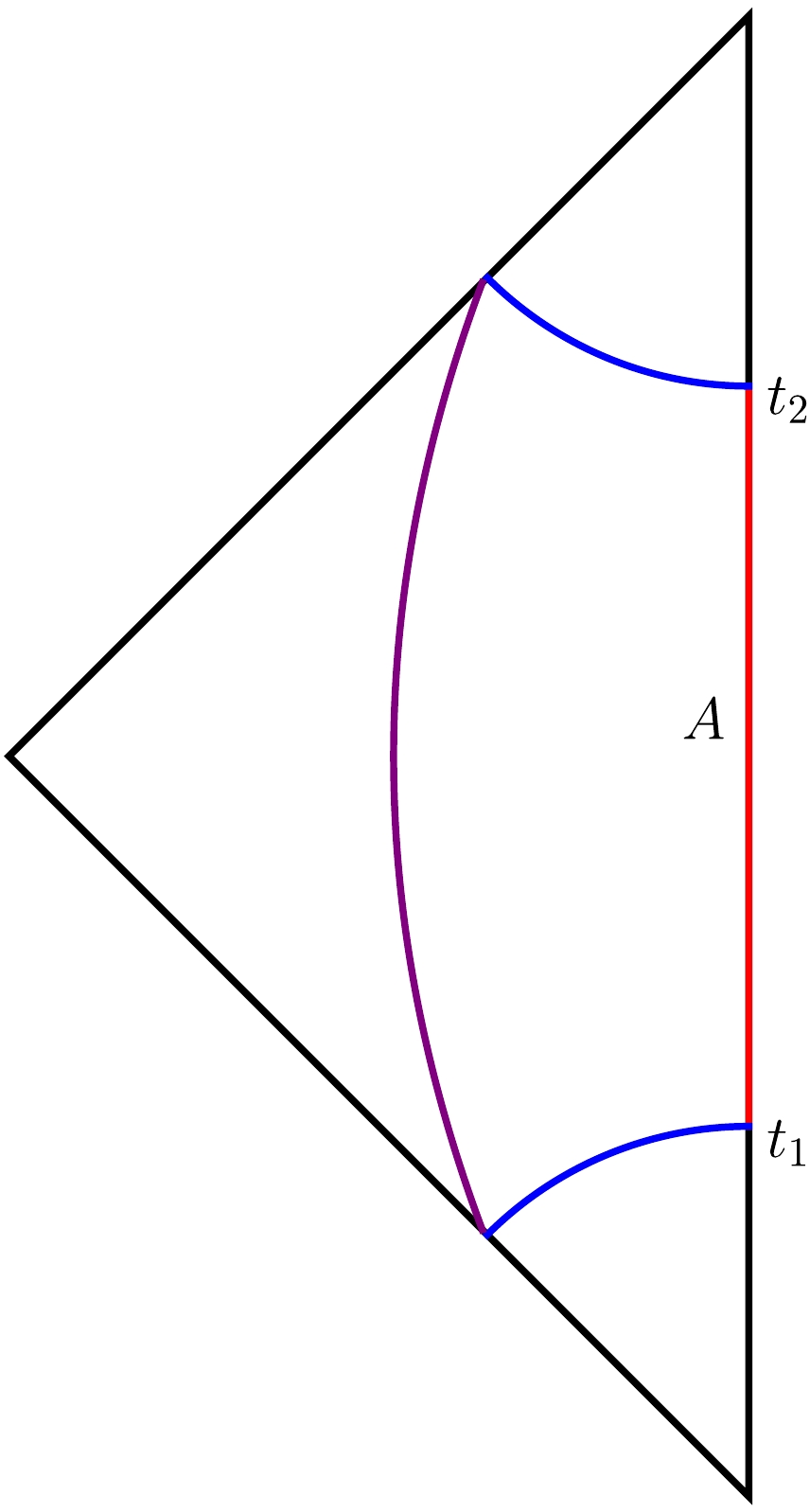 For a Lorentzian invariant theory, the entanglement entropy should be a function of the domain of dependence of the subregion under consideration. More precisely, it should be a function of the domain of dependence and the appropriate cut-off. In this study, we refine the concept of cut-off to make it applicable to timelike regions and assume that the usual entanglement entropy formula also applies to timelike intervals. Using the Rindler method, the timelike entanglement entropy can be regarded as the thermal entropy of the CFT after the Rindler transformation plus a constant
For a Lorentzian invariant theory, the entanglement entropy should be a function of the domain of dependence of the subregion under consideration. More precisely, it should be a function of the domain of dependence and the appropriate cut-off. In this study, we refine the concept of cut-off to make it applicable to timelike regions and assume that the usual entanglement entropy formula also applies to timelike intervals. Using the Rindler method, the timelike entanglement entropy can be regarded as the thermal entropy of the CFT after the Rindler transformation plus a constant${\rm i}\pi c/6$ , where c denotes the central charge. The gravitational dual of the 'covariant' timelike entanglement entropy is presented following this method. -
Form factor for Dalitz decays from J/ψ to light pseudoscalars
2024, 48(11): 113105. doi: 10.1088/1674-1137/ad641b
 We calculate the form factor
We calculate the form factor$M(q^2)$ for the Dalitz decay$J/\psi\to \gamma^*(q^2)\eta_{(N_f=1)}$ with$\eta_{(N_f)}$ being the SU($N_f$ ) flavor singlet pseudoscalar meson. The difference among the partial widths$\Gamma(J/\psi\to \gamma \eta_{(N_f)})$ at different$N_f$ can be attributed in part to the$N_f$ and quark mass dependences induced by the$\mathbf{U}_A(1)$ anomaly dominance.$M(q^2)$ in both$N_f=1,2$ is well described by the single pole model$M(q^2)=M(0)/(1-q^2/\Lambda^2)$ . Combined with the known experimental results of the Dalitz decays$J/\psi\to Pe^+e^-$ , the pseudoscalar mass$m_P$ dependence of the pole parameter$\Lambda$ is approximated by$\Lambda(m_P^2)=\Lambda_1(1-m_P^2/\Lambda_2^2)$ with$\Lambda_1={2.65(5)}~\mathrm{GeV}$ and$\Lambda_2={2.90(35)}~\mathrm{GeV}$ . These results provide inputs for future theoretical and experimental studies on the Dalitz decays$J/\psi\to Pe^+e^-$ . -
A new perspective on the diffuse gamma-ray emission excess
2024, 48(11): 115105. doi: 10.1088/1674-1137/ad72d4
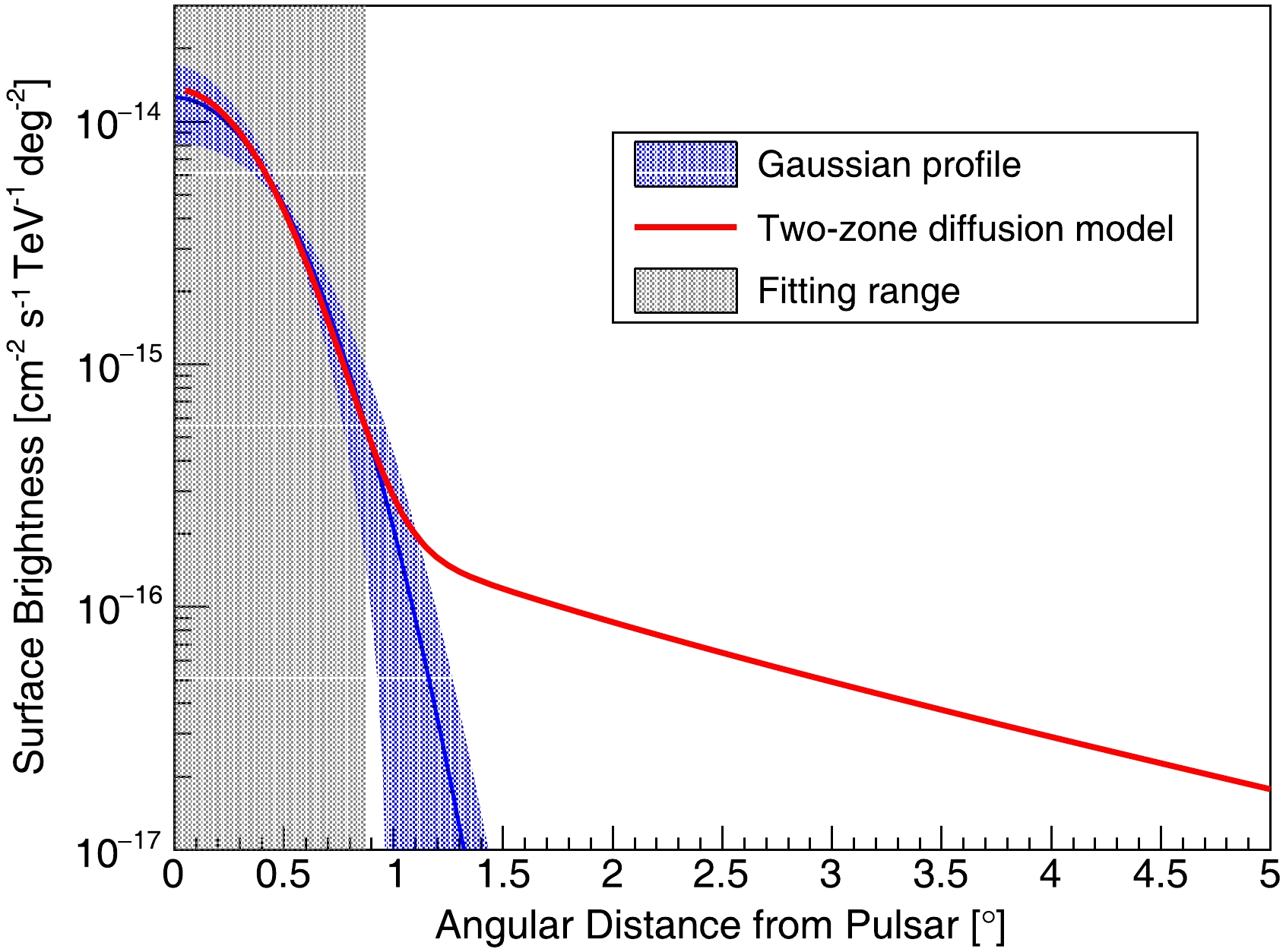 The Large High-Altitude Air Shower Observatory (LHAASO) recently published measurements of diffuse Galactic gamma-ray emission (DGE) in the 10−1000 TeV energy range. The measured DGE flux is significantly higher than the expectation from hadronic interactions between cosmic rays (CRs) and the interstellar medium. This excess has been proposed to originate from unknown extended sources produced by electron radiation, such as pulsar wind nebulae or pulsar halos (PWNe/halos). In this paper, we propose a new perspective to explain the DGE excess observed by LHAASO. The masking regions used in the LHAASO DGE measurement may not fully encompass the extended signals of
The Large High-Altitude Air Shower Observatory (LHAASO) recently published measurements of diffuse Galactic gamma-ray emission (DGE) in the 10−1000 TeV energy range. The measured DGE flux is significantly higher than the expectation from hadronic interactions between cosmic rays (CRs) and the interstellar medium. This excess has been proposed to originate from unknown extended sources produced by electron radiation, such as pulsar wind nebulae or pulsar halos (PWNe/halos). In this paper, we propose a new perspective to explain the DGE excess observed by LHAASO. The masking regions used in the LHAASO DGE measurement may not fully encompass the extended signals of$\textit{known} $ PWNe/halos. By employing a two-zone diffusion model for electrons around pulsars, we find that the DGE excess in most regions of the Galactic plane can be well explained by the signal leakage model under certain parameters. Our results indicate that this signal leakage from known sources and contributions from unresolved sources should be considered as complementary in explaining the DGE excess.
Just Accepted
More >
-
Detailed derivation of the 3P0 strong decay model applied to baryons
Published: 2024-11-07
-
Polarization study of the P-wave charmonium radiative decay into a light vector meson at e+e− collider experiment
Published: 2024-11-07
-
Two Texture Zeros for Dirac Neutrinos in a Diagonal charged lepton basis
Published: 2024-11-07
Recent
More >
-
Operators of quantum theory of Dirac's free field
2024, 48(12): 123106-123106-34. doi: 10.1088/1674-1137/ad745cShow AbstractThe Pryce (e) spin and position operators of the quantum theory of Dirac's free field were re-defined and studied recently with the help of a new spin symmetry and suitable spectral representations [Eur. Phys. J. C 82, 1073 (2022)]. This approach is generalized here, associating a pair of integral operators acting directly on particle and antiparticle wave spinors in momentum representation to any integral operator in configuration representation, acting on mode spinors. This framework allows an effective quantization procedure, giving a large set of one-particle operators with physical meaning as the spin and orbital parts of the isometry generators, the Pauli-Lubanski and position operators, or other spin-type operators proposed to date. Special attention is paid to the operators that mix the particle and antiparticle sectors whose off-diagonal associated operators have oscillating terms producing Zitterbevegung. The principal operators of this type, including the usual coordinate operator, are derived here for the first time. As an application, it is shown that an apparatus measuring these new observables may prepare and detect one-particle wave packets moving uniformly without Zitterbewegung or spin dynamics, spreading in time normally as any other relativistic or even non-relativistic wave packet.
-
Scissors vibration and its collective rotation in a microscopic investigation
2024, 48(12): 124101-124101-11. doi: 10.1088/1674-1137/ad6e61Show AbstractThe intrinsic vibrational motion and the rotational behavior of the scissors mode in well deformed nuclei are investigated with an angular-momentum-projected approach, which is interpreted as a generator-coordinate-method with the generator coordinates corresponding to the degrees of freedom of interest. The picture of the intrinsic and rotational motion of the scissors mode is illustrated from the collective wave function within the framework of the generator-coordinate-method. The harmonicity of the scissors vibration is found to arise naturally from the present model but can be disturbed by the Coriolis effect as spin increases. The odd and even spin members of the rotational band based on the scissors mode rotate about different axes perpendicular to each other, leading to the flipping moment of inertia and the consequent splitting behavior that has been suggested previously.
-
Measurements of the 128Te(n, 2n)127m,gTe reaction cross sections and isomeric cross section ratio of 127m,gTe at the neutron energy of 14 MeV
2024, 48(12): 124001-124001-11. doi: 10.1088/1674-1137/ad7370Show AbstractIn this study, measurements of the 128Te(n, 2n)127m,gTe reaction cross sections and the computation of the isomeric cross section ratio were performed around the neutron energy of 13−15 MeV. We used a γ-ray spectrometric technique to conduct the measurements. The neutron energy was produced by the 3H(d,n)4He reaction. For the 128Te(n, 2n)127m,gTe reaction, the excited state, ground state, total cross section, and isomeric cross section ratio were determined using the TALYS-1.96 code, a theoretical nuclear model that allows for variations in density options. The initial experimental data, assessed nuclear data, and theoretical calculations based on the TALYS-1.96 algorithm were compared with the measurement results. The new data produced by this study are essential for validating nuclear models and establishing parameters for nuclear reactions.
Archive
ISSN 1674-1137 CN 11-5641/O4
Original research articles, Ietters and reviews Covering theory and experiments in the fieids of
- Particle physics
- Nuclear physics
- Particle and nuclear astrophysics
- Cosmology
Author benefits
- A SCOAP3 participating journal - free Open Access publication for qualifying articles
- Average 24 days to first decision
- Fast-track publication for selected articles
- Subscriptions at over 3000 institutions worldwide
- Free English editing on all accepted articles
News
- Chinese Physics C Outstanding Reviewer Award 2023
- Impact factor of Chinese Physics C is 3.6 in 2022
- 2022 CPC Outstanding Reviewer Awards
- The 2023 Chinese New Year-Office closure
- 《Chinese Physics C》BEST PAPER AWARDS 2022
Cover Story
- Cover Story (Issue 11, 2024) | Form factor for Dalitz decays from J/ψ to light pseudoscalars
- Cover Story (Issue 3, 2024) | First measurement of the ground-state mass of 22Al helps to evaluate the ab-initio theory
- Cover Story (Issue 9, 2024) Measurement of solar pp neutrino flux using electron recoil data from PandaX-4T commissioning run
- Cover Story (Issue 2, 2024) | Quark/gluon taggers light the way to new physics
- Cover Story (Issue 8, 2024) | Applyingdeep learning technique to chiral magnetic wave search





